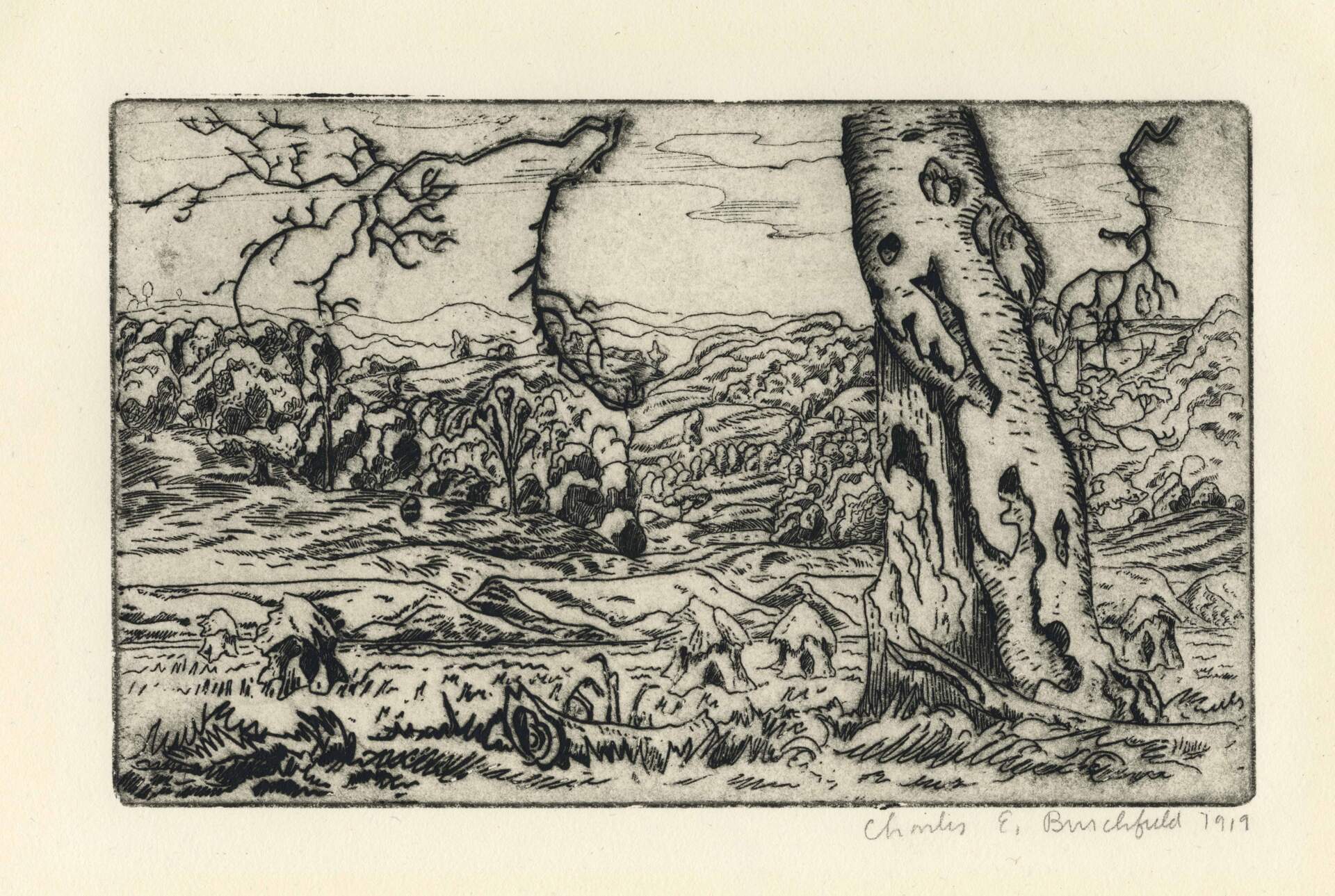Charles E. Burchfield (1893-1967)Beech Tree and Valley of the Little Beaver
1919
intaglio on paper
5 1/8 x 8 1/4 inches
Burchfield Penney Art Center, Gift of Charles Rand Penney, 1994
One can understand how significant Little Beaver Creek was in representing solace and freedom after reading autobiographical notes that Burchfield wrote about the events of 1898:
My father died when I was five. My mother, with her six children, moved to her former home, Salem, Ohio. We were practically penniless, but my older brother, Jim, although only fifteen, secured a job in a local factory and, through his sacrifice, kept the family together.
A “council of war” held by my mother and her married sisters and brothers strongly advocated dividing the care of her children among the various family groups. To this my brother would not agree. Two of my bachelor uncles pooled their savings and bought us a six-room frame house, where we lived rent free.
Salem is a manufacturing town, originally settled by Quakers. We lived in the northeast part of town, farthest from the manufacturing district. It was near enough to the countryside when I was a boy for me to have easy access to the fields and woods, to which I was naturally drawn. I was fond of wild flowers and had a wild-flower garden in our back yard, under the grape arbor. Often, my mother allowed me to go out in the woods accompanied only by my pug dog; usually, I took my lunch and spent the day. At other times, I went with my brothers. There was of course, the usual swimming hole: Little Beaver Creek, about three miles from town.
--Nancy Weeky, 2004
